Related Research Articles

The Boston Brahmins or Boston elite are members of Boston's traditional upper class. They are often associated with Harvard University; Anglicanism; upper-class clubs such as the Somerset in Boston, the Knickerbocker in New York City, the Metropolitan in Washington, D.C., and the Pacific-Union Club in San Francisco; and traditional Anglo-American customs and clothing. Descendants of the earliest English colonists are typically considered to be the most representative of the Boston Brahmins. They are considered White Anglo-Saxon Protestants (WASPs).

The Fitchburg Railroad is a former railroad company, which built a railroad line across northern Massachusetts, United States, leading to and through the Hoosac Tunnel. The Fitchburg was leased to the Boston and Maine Railroad in 1900. The main line from Boston to Fitchburg is now operated as the MBTA Fitchburg Line; Pan Am Railways runs freight service on some other portions.
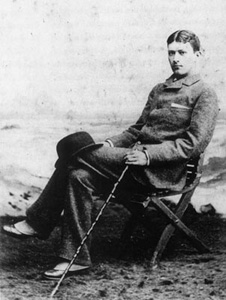
Ogden Codman Jr. was an American architect and interior decorator in the Beaux-Arts styles, and co-author with Edith Wharton of The Decoration of Houses (1897), which became a standard in American interior design.

William Appleton was an American businessman and politician from Massachusetts. He was a trader, shipowner, and banker, and served as a U.S. representative from Massachusetts from 1851 to 1855, and again from 1861 to 1862.

Ednah Dow Littlehale Cheney was an American writer, reformer, and philanthropist.
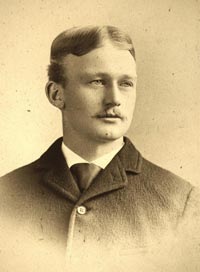
Ernest Amory Codman, M.D., was a pioneering Boston surgeon who made contributions to anaesthesiology, radiology, duodenal ulcer surgery, orthopaedic oncology, shoulder surgery, and the study of medical outcomes.
Maxim Karolik was an opera singer for the Petrograd Grand Opera. He was an art collector and married into one of Boston, Massachusetts's wealthiest families.
Codman may refer to:

The Boston Museum (1841–1903), also called the Boston Museum and Gallery of Fine Arts, was a theatre, wax museum, natural history museum, zoo, and art museum in 19th-century Boston, Massachusetts. Moses Kimball established the enterprise in 1841.

The Boston Camera Club is the leading amateur photographic organization in Boston, Massachusetts and vicinity. Founded in 1881, it offers activities of interest to amateur photographers, particularly digital photography. It meets weekly from September to June. Membership and meetings are open to the public.
The New England Art Union was established in Boston, Massachusetts, for "the encouragement of artists, the promotion of art" in New England and the wider United States. Edward Everett, Franklin Dexter, and Henry Wadsworth Longfellow served as officers of the board. The short-lived but lively union ran a public gallery on Tremont Street, and published a journal. Artists affiliated with the union included Chester Harding, Fitz Henry Lane, Alvan Fisher, and other American artists of the mid-19th century.
Amory Hall was located on the corner of Washington Street and West Street in Boston, Massachusetts, in the 19th century. Myriad activities took place in the rental hall, including sermons; lectures by Henry David Thoreau, Ralph Waldo Emerson, William Lloyd Garrison; political meetings; exhibitions by Rembrandt Peale, George Catlin, John Banvard; moving panoramas; magic shows; concerts; and curiosities such as the "Nova Scotia Giant Boy."

Shepard S. Woodcock (1824-1910) was an American architect practicing in Boston, Massachusetts during the second half of the nineteenth century.
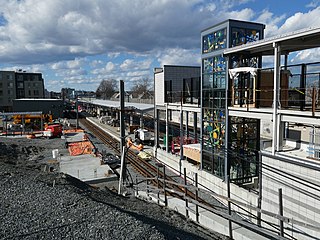
Ball Square station is an under-construction light rail station on the MBTA Green Line E branch in the Ball Square neighborhood of Somerville and Medford, Massachusetts. Ball Square will consist of one island platform, which will serve the E branch's two tracks. The station is expected to open in mid-2022 as part of the Green Line Extension.
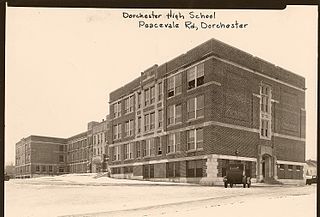
Dorchester High School is a defunct secondary school that was located in Dorchester, Boston, United States from 1852 to 2003.
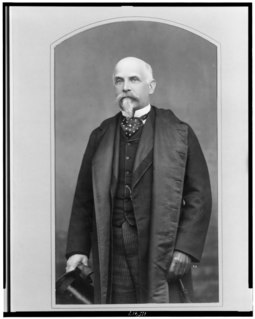
Thomas Jefferson Coolidge was a U.S. ambassador and a leading Boston businessman.

The New England Woman's Press Association (NEWPA) was founded by six Boston newspaper women in 1885 and incorporated in 1890. By the turn of the century it had over 150 members. NEWPA sought not only to bring female colleagues together and further their careers in a male-dominated field, but to use the power of the press for the good of society. The group raised funds for charity and supported women's suffrage and other political causes.
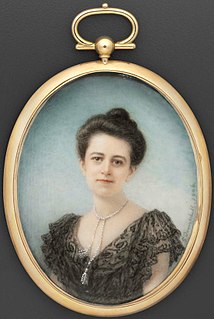
Martha Catherine Codman Karolik was a philanthropist and American art collector. She donated three major collections of early American furniture, paintings, and prints and drawings to the Boston Fine Art Museum which built a new wing to host it.

The Codman Carriage House and Stable is a historic building located at 1415 22nd Street NW in the Dupont Circle neighborhood of Washington, D.C. The industrial building was constructed in 1907 as a carriage house and stable for socialite and art collector Martha Codman Karolik, who lived a few blocks north in the Codman–Davis House. The Second Empire style building was designed by Karolik's cousin, architect, and prominent interior decorator Ogden Codman Jr., who also designed her home.

Moody Merrill was an American politician, businessman, and fugitive. He served in both houses of the Massachusetts General Court, was president of the Highland Street Railway, helped organize the Boston Consolidated Street Railway, and defeated incumbent Thomas N. Hart to become the Republican nominee in the 1890 Boston mayoral election. In 1893, financial and legal difficulties led him to flee Boston and live under an assumed name in Silver City, New Mexico. He was arrested in 1903, but fled before his trial began. He died before the charges against him could be resolved.
References
- ↑ Massachusetts Historical Society. "Karolik-Codman Family Papers, 1714-1964: Guide to the Collection" . Retrieved May 8, 2010.
- ↑ Bulletin of the New England Art Union, no. 1, 1852.
- ↑ Boston Directory. 1852
- 1 2 "Karolik-Codman Family Papers". Massachusetts Historical Society. Retrieved 11 January 2018.
- ↑ "Mrs. Karolik, 92, Art Patron, Dies. Newport Leader and Husband Gave $400,000 Collection of Americana Museum". New York Times . April 22, 1948.
- ↑ "The Codman Will Stands". The New York Times. July 10, 1887. Retrieved June 9, 2022.
- ↑ "Broken! John Amory Codman's Will Overthrown". The Boston Globe. December 24, 1887. Retrieved June 9, 2022.
- ↑ "Violet's $15,000". The Boston Globe. April 20, 1889. Retrieved June 9, 2022.




